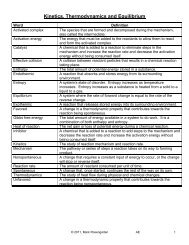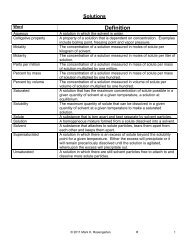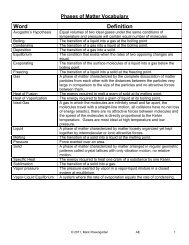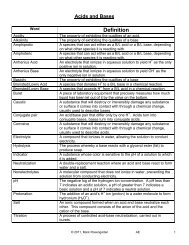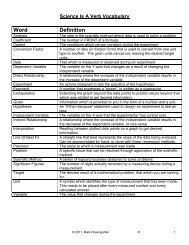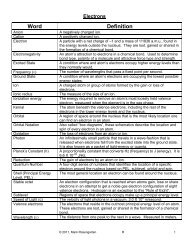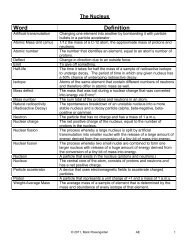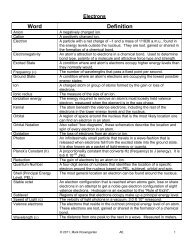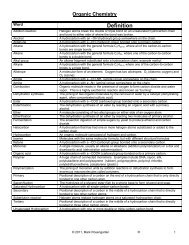Unit 4 - Mark Rosengarten
Unit 4 - Mark Rosengarten
Unit 4 - Mark Rosengarten
Create successful ePaper yourself
Turn your PDF publications into a flip-book with our unique Google optimized e-Paper software.
Uranium Decay: U-238 is unstable and decays into more stable nucei. It takes 14 decay steps until a stable,<br />
non-radioactive nucleus is finally reached. The daughter nuclide of one step becomes the parent nuclide of<br />
the next:<br />
PARENT NUCLIDE<br />
DAUGHTER NUCLIDE<br />
1) α) 238 92U 4 2He + 234 90 Th<br />
2) β − ) 234 90Th 0 -1e +<br />
234<br />
91 Pa<br />
3) β − ) 234 91Pa 0 -1e +<br />
234<br />
92 U<br />
4) α)<br />
5) α)<br />
6) α)<br />
7) α)<br />
234<br />
92 U 4 2He + 230 90Th<br />
230<br />
90 Th _____ + _______ OK, now YOU finish them off!<br />
8) α)<br />
9) β − )<br />
10) β − )<br />
11) α)<br />
12) β − )<br />
13) β − )<br />
14) α)<br />
The half-life of U-238, according to Reference Table N, is 4.51 X 10 9 years (4.51 billion years). The oldest rocks<br />
on Earth consist of a 1:1 ratio of U-238 to Pb-206. This means that the Earth’s oldest rocks are 1 half-life of<br />
uranium old. How old is the Earth? 4.51 billion years old! Looks pretty good for its age, doesn’t it?<br />
The mode of decay can be found on Reference Table N.<br />
© 2011, <strong>Mark</strong> <strong>Rosengarten</strong> R 8



